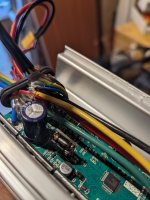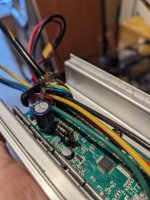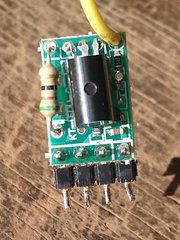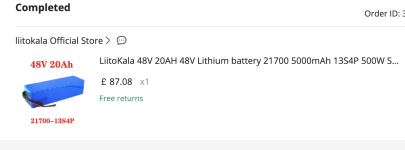brit-boards
1 mW
- Joined
- Sep 19, 2015
- Messages
- 10
Hello,
I wired up this new ebike controller (Kt48zwsrkt) and tested it originally was all working well.
After connecting my headlight (24v) to the switched light output started to smell something unhealthy.
After taking apart the controller can see this fuse has blown/burnt out and the motor no longer turns. It powers up, brake sensors and pedal assist all appear to function ok. I have a thumb throttle and when using this it will make the motor "shunt" then nothing.
My questions are: Have I completely fried this controller now somehow by connecting a headlamp?
Can I find a replacement fuse and attempt a re-solder or is the whole board lost?
Would anyone happen to know what the fuse is there as it is totally burnt out so cant see any markings.
Any help/support would be greatly appreciated as on a very modest budget.
Thanks,
Alex


I wired up this new ebike controller (Kt48zwsrkt) and tested it originally was all working well.
After connecting my headlight (24v) to the switched light output started to smell something unhealthy.
After taking apart the controller can see this fuse has blown/burnt out and the motor no longer turns. It powers up, brake sensors and pedal assist all appear to function ok. I have a thumb throttle and when using this it will make the motor "shunt" then nothing.
My questions are: Have I completely fried this controller now somehow by connecting a headlamp?
Can I find a replacement fuse and attempt a re-solder or is the whole board lost?
Would anyone happen to know what the fuse is there as it is totally burnt out so cant see any markings.
Any help/support would be greatly appreciated as on a very modest budget.
Thanks,
Alex












